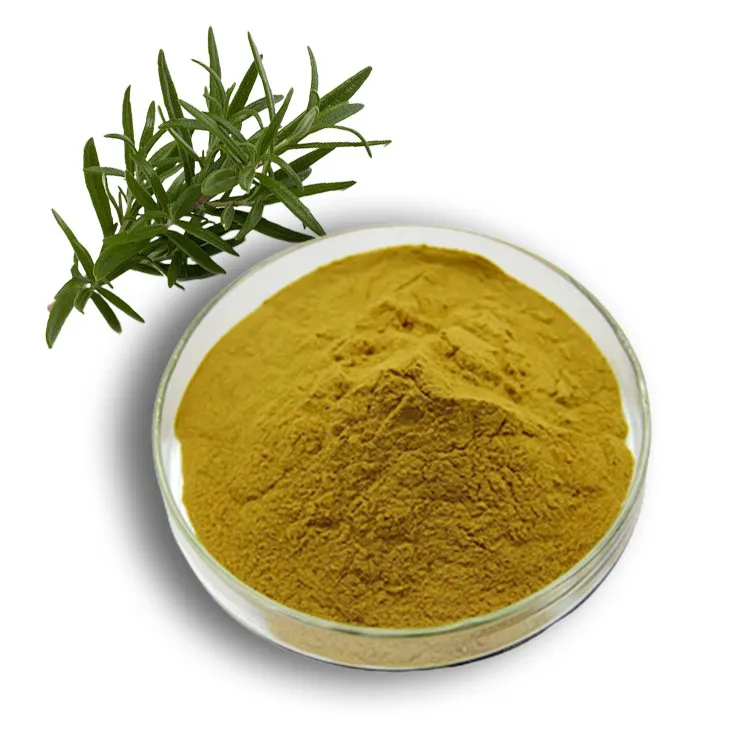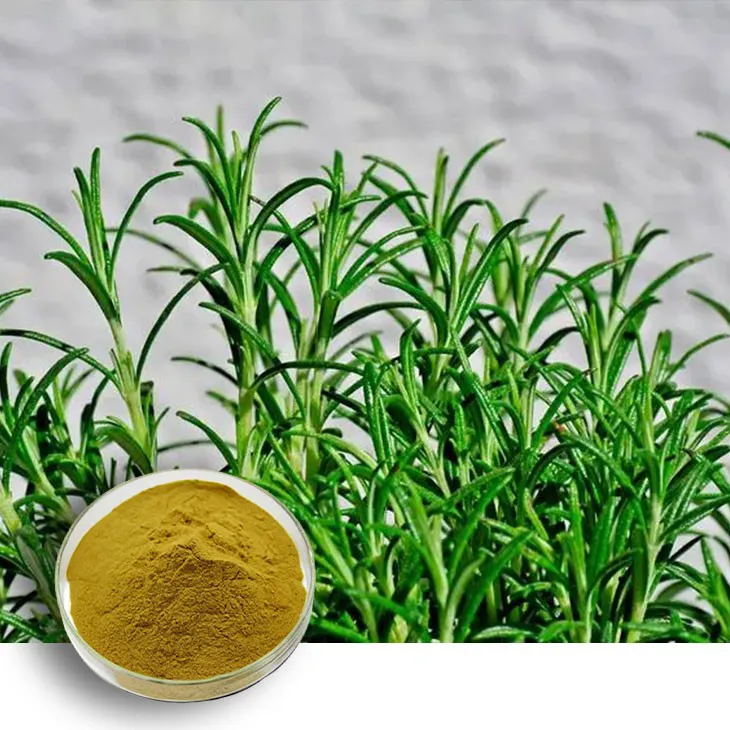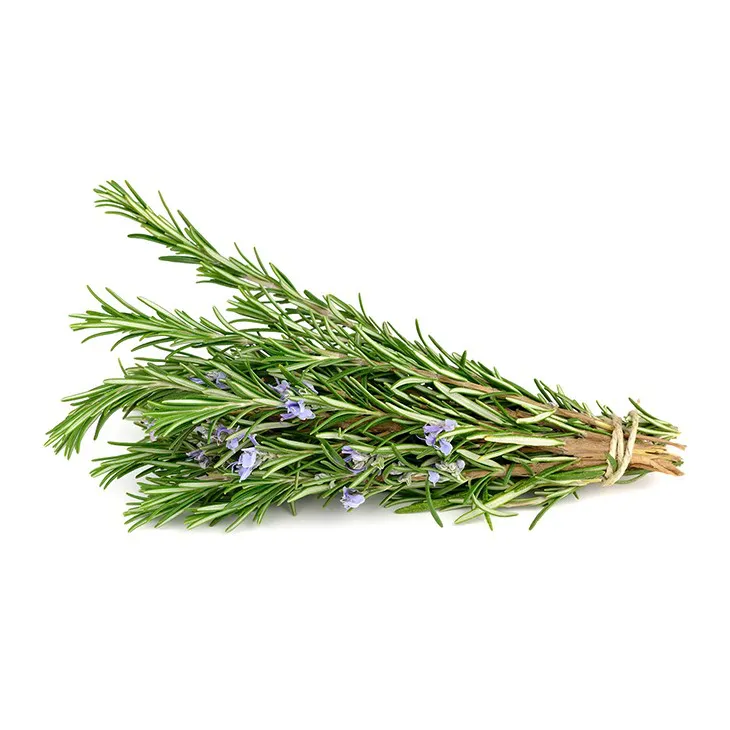- 0086-571-85302990
- sales@greenskybio.com
The process of extracting the main components of rosemary from rosemary extract.
2024-11-26

1. Introduction to Rosemary extract
Rosemary (Rosmarinus officinalis) is a well - known herb that has been used for centuries in various applications, including culinary, medicinal, and cosmetic. Rosemary extract is a concentrated form of the bioactive compounds present in the rosemary plant. It contains a rich variety of components, such as essential oils, phenolic compounds (including rosmarinic acid, carnosic acid, and carnosol), flavonoids, and diterpenes. These components are responsible for the characteristic aroma, flavor, and many of the beneficial properties associated with rosemary.

2. Initial Extraction for Crude Extract
2.1 Selection of Organic Solvents
The first step in the extraction of the main components from Rosemary extract often involves the use of organic solvents. Commonly used solvents include ethanol, methanol, and hexane. Ethanol is a popular choice due to its relatively low toxicity, good solubility for many of the target compounds, and its ability to be easily removed during the subsequent purification steps. Methanol also has good solvent properties but is more toxic. Hexane, on the other hand, is mainly used for the extraction of non - polar components like some of the essential oils.
2.2 Extraction Methods
There are several methods for performing the extraction using organic solvents:- Maceration: This is a simple and traditional method. The rosemary plant material (leaves, stems, etc.) is soaked in the selected organic solvent for a period of time, usually several hours to days. During this time, the solvent penetrates the plant tissue and dissolves the target compounds. The mixture is then filtered to separate the liquid extract (containing the dissolved compounds) from the solid plant residue.
- Soxhlet Extraction: This is a more efficient method, especially for extracting components that are less soluble or require longer extraction times. In Soxhlet extraction, the rosemary sample is placed in a thimble inside a Soxhlet apparatus. The solvent is continuously recycled through the sample. The solvent vaporizes in the distillation flask, rises through the condenser, and then drips back onto the sample in the thimble. This process is repeated multiple times until the extraction is complete. The advantage of this method is that it can achieve a more thorough extraction compared to maceration.
- Ultrasonic - Assisted Extraction: Ultrasonic waves are applied during the extraction process. The ultrasonic energy creates cavitation bubbles in the solvent. When these bubbles collapse, they generate high - pressure and high - temperature micro - environments that enhance the mass transfer of the target compounds from the plant material into the solvent. This method can significantly reduce the extraction time and often results in higher extraction yields compared to traditional methods.

3. Refining and Isolating the Main Components
3.1 Macroporous Resin Adsorption
After obtaining the crude extract, macroporous resin adsorption is a commonly used technique for refining and isolating the main components. Macroporous resins are polymeric materials with a large pore structure. They can selectively adsorb different compounds based on their chemical properties (such as polarity, molecular size, etc.).- The crude rosemary extract is passed through a column filled with the macroporous resin. Different components in the extract will have different affinities for the resin. For example, phenolic compounds and essential oils may adsorb to the resin surface or within the pores to different extents.
- After adsorption, a series of washing steps can be carried out to remove impurities that are not strongly adsorbed. The washing solvent is chosen based on the properties of the target components and the impurities. For instance, a less polar solvent may be used to wash away non - polar impurities while leaving the more polar target components adsorbed on the resin.
- Finally, the target components are eluted from the resin using an appropriate elution solvent. The elution solvent is carefully selected to ensure that it can effectively desorb the desired components from the resin. For phenolic compounds, a solvent with a certain degree of polarity (such as a mixture of ethanol and water) may be used for elution.
3.2 Other Separation Techniques
In addition to macroporous resin adsorption, other techniques can also be used for further separation and purification of the main components from rosemary extract:- Column Chromatography: This is a traditional separation technique. Different stationary phases (such as silica gel, alumina, etc.) can be used in the column. The crude extract is loaded onto the top of the column, and then a mobile phase (solvent or solvent mixture) is passed through the column. Components in the extract will move at different rates depending on their interactions with the stationary and mobile phases, allowing for separation. For example, polar components may interact more strongly with a polar stationary phase like silica gel and move more slowly through the column compared to non - polar components.
- High - Performance Liquid Chromatography (HPLC): HPLC is a more advanced and precise separation technique. It can achieve high - resolution separation of the components in the rosemary extract. In HPLC, a liquid sample (the rosemary extract) is pumped through a column filled with a very fine - particle stationary phase under high pressure. The mobile phase composition can be precisely controlled to optimize the separation of different components. HPLC is often used for the final purification and analysis of the main components, such as the separation and quantification of individual phenolic compounds.
- Supercritical Fluid Extraction (SFE): Supercritical fluids, such as supercritical carbon dioxide (CO₂), can also be used for extraction and separation. Supercritical CO₂ has properties between those of a gas and a liquid. It has good solubility for non - polar and moderately polar compounds, and can easily penetrate plant tissues. In SFE, the supercritical fluid is passed through the rosemary material to extract the target components. By adjusting the pressure and temperature, the selectivity of the extraction can be controlled. After extraction, the supercritical fluid can be easily removed by reducing the pressure, leaving behind the purified components.

4. Importance of the Main Components
The main components obtained from the rosemary extract, such as essential oils and phenolic compounds, have significant importance:
- Health - Promoting Properties:
- Phenolic compounds, especially rosmarinic acid, carnosic acid, and carnosol, have antioxidant properties. They can scavenge free radicals in the body, which are associated with various diseases such as cancer, cardiovascular diseases, and neurodegenerative disorders. By neutralizing free radicals, these compounds can help protect cells from oxidative damage.
- Some of the components in rosemary extract have anti - inflammatory effects. They can modulate the immune response and reduce inflammation in the body. This makes them potentially useful in the treatment of inflammatory conditions such as arthritis.
- Preservative Qualities:
- Essential oils from rosemary have antimicrobial properties. They can inhibit the growth of bacteria, fungi, and yeasts. This makes them valuable as natural preservatives in the food, cosmetic, and pharmaceutical industries. For example, in the food industry, rosemary essential oil can be used to extend the shelf - life of products such as meat, dairy products, and baked goods.
- Phenolic compounds also contribute to the preservative effect. They can prevent lipid oxidation in food products, which is one of the main causes of spoilage. In cosmetics, they can help protect the products from microbial contamination and degradation.

5. Conclusion
The extraction of the main components from rosemary extract is a multi - step process that involves initial extraction using organic solvents to obtain a crude extract, followed by refining and isolating steps such as macroporous resin adsorption and other separation techniques. The main components obtained, including essential oils and phenolic compounds, have important health - promoting and preservative qualities. With the increasing demand for natural products and the recognition of the beneficial properties of rosemary components, further research and optimization of the extraction process are still needed to ensure high - quality and efficient extraction.
FAQ:
Question 1: What are the common organic solvents used in the initial extraction of rosemary extract?
Ethanol is one of the most commonly used organic solvents in the initial extraction of rosemary extract. Hexane can also be used in some cases. These solvents are able to dissolve the various compounds present in rosemary to obtain a crude extract.
Question 2: How does macroporous resin adsorption work in refining rosemary extract?
Macroporous resin adsorption works based on the different affinities of the components in rosemary extract towards the resin. Components with stronger affinities will be adsorbed onto the resin surface, while other unwanted substances can be washed away. Then, by using an appropriate eluent, the adsorbed main components such as essential oils and phenolic compounds can be desorbed and collected, thus achieving the purpose of concentration and purification.
Question 3: What are the main health - promoting qualities of the main components in rosemary?
The essential oils in rosemary, which are one of the main components, may have antioxidant properties that can help protect cells from oxidative damage. Phenolic compounds can also have anti - inflammatory effects, which may contribute to overall health by reducing inflammation in the body.
Question 4: Why are the main components of rosemary important in preservative applications?
The main components of rosemary, especially phenolic compounds, have antimicrobial properties. They can inhibit the growth of bacteria, fungi, and other microorganisms, which makes them useful in preservative applications in food, cosmetics, and pharmaceuticals to extend the shelf - life of products.
Question 5: Are there any other methods to isolate the main components of rosemary extract besides macroporous resin adsorption?
Yes, there are other methods. For example, distillation can be used to isolate the essential oils from rosemary extract. Liquid - liquid extraction is also a possible method, which can separate components based on their different solubilities in two immiscible solvents.
Related literature
- Isolation and Characterization of Bioactive Compounds from Rosemary (Rosmarinus officinalis L.)"
- "Extraction and Analysis of Main Components in Rosemary Extract for Health and Preservation"
- "The Role of Rosemary Extract Components in Food Preservation: A Review"
- ▶ Hesperidin
- ▶ citrus bioflavonoids
- ▶ plant extract
- ▶ lycopene
- ▶ Diosmin
- ▶ Grape seed extract
- ▶ Sea buckthorn Juice Powder
- ▶ Beetroot powder
- ▶ Hops Extract
- ▶ Artichoke Extract
- ▶ Reishi mushroom extract
- ▶ Astaxanthin
- ▶ Green Tea Extract
- ▶ Curcumin Extract
- ▶ Horse Chestnut Extract
- ▶ Other Problems
- ▶ Boswellia Serrata Extract
- ▶ Resveratrol Extract
- ▶ Marigold Extract
- ▶ Grape Leaf Extract
- ▶ blog3
- ▶ blog4
-
Organic Tongkat Ali extract powder factory.
2024-11-26
-
How to make powder with ashwagandha extract.
2024-11-26
-
Rosehip extract manufacturers from China.
2024-11-26
-
The best cat's claw extract in nature.
2024-11-26
-
Chinese Dandelion Leaf Extract Suppliers.
2024-11-26
-
Fenugreek Extract Powder
2024-11-26
-
Marigold Extract
2024-11-26
-
Tamarind extract powder
2024-11-26
-
Hops Extract
2024-11-26
-
Berberis aristata Extract
2024-11-26
-
Peppermint Extract Powder
2024-11-26
-
Golden Seal Extract
2024-11-26
-
Sugarcane Extract
2024-11-26
-
Lycopene
2024-11-26
-
Soy Extract
2024-11-26





















